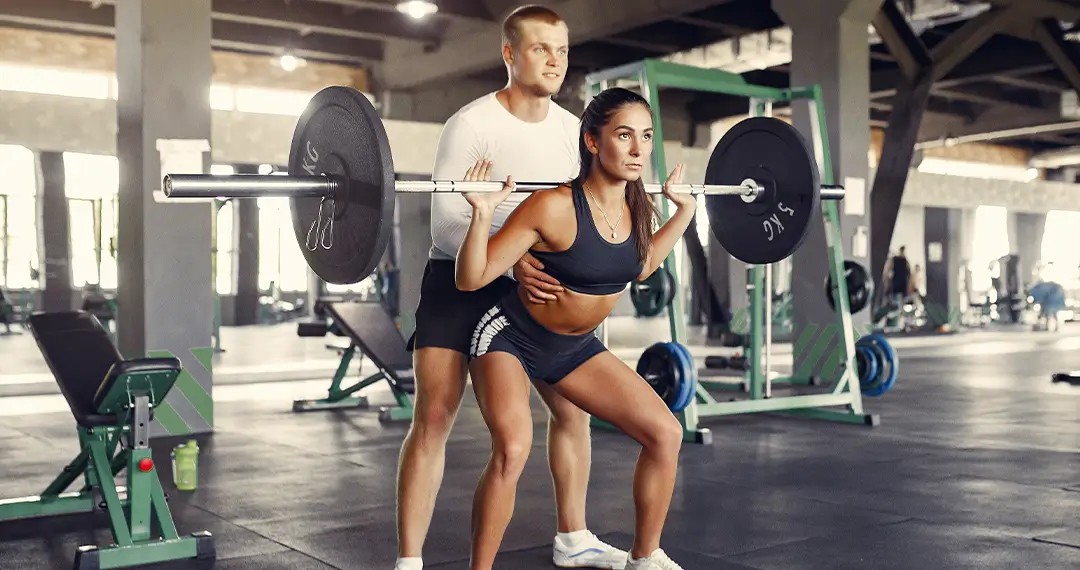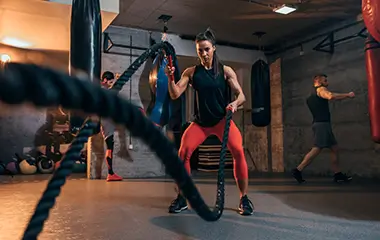Fitness has become a primary goal in people’s lives. To achieve that goal, people join different gyms to shape their bodies and maintain a healthy life. Apart from doing daily exercises, it is also important that their trainer give them feedback in terms of assessment. So they can get the opportunity to improve.
Fitness assessment has become an important way to track the performance of the clients and to recommend improvements. Assessments are carried out in different ways to check out performance and finalize the report. From personal training to exercise classes and everything in between, fitness assessment provides the groundwork for healthy living and promotes good health.
As a personal trainer, first, you need to know that fitness is not a one-size-fits-all concept. Each client who is enrolled in your gym has different needs, preferences, goals, and abilities. That’s why it is important to conduct a fitness assessment. This fitness assessment helps the client to improve. This assessment helps the trainer design an effective workout plan.
What is fitness assessment?
Before starting the evolution of clients, gym owners, and trainers need to understand “ Fitness Assessment.” A fitness assessment is a series of measurements that help them evaluate their clients’ health and fitness levels. This evaluation involves the assessment of the client’s flexibility, muscular strength, cardiovascular endurance, and body composition.
Thus, it helps the trainers evaluate
- Weakness and strength
- Set specific and realistic goals
- Ensure the safety of the client by preventing injury
- Create a baseline and track the client’s progress
- Adjust the training session for better results.
Thus, this assessment helps both the clients and trainers to highlight their weaknesses and design a workout plan that helps them remove those flaws.
Features of fitness assessment
As a personal trainer, it is important to understand the key features that you have to evaluate. These features help you to redefine the training sessions for further improvement.
Body composition
As you know, the body is comprised of a combination of bone, fats, and muscles. You have to analyze the body composition of each client, as this feature defines the working capacity and the movements while carrying the workout. Thus, the assessment of body composition allows the trainers to change the workout plan.
Movement
This feature defines the body movement that the client makes while performing the workout. It helps the trainer evaluate the core movement patterns like hurdle steps, incline lunges, push-ups, deep squats, shoulder mobility, and straight-leg raises.
Core movements evaluation helps the trainer conduct special sessions. So they can explain the right body postures for effective workouts to the clients.
Work capacity

Capacity means the ability of a bodybuilder to carry out an intense workout. As a trainer, you can evaluate the work capacity by two means. The first one is to measure the physical capacity, which defines how much weight a client can lift to shape their body.
The second one is output-based, which defines the outcome an individual brings after a session. Thus, this feature of assessment allows you to reshape the workout plan so that the fitness freak can get the desired results.
Top 10 components for fitness assessment
Fitness assessments have a large number of components that define them and help to evaluate the key features. The results of the assessment allow trainers to evaluate the key features so that they can change their diet and workout plans accordingly. Here are 10 components that will help you to evaluate the overall performance of your client.
Body composition
Body Composition helps the trainer find the ratio of lean mass to body fat. This assessment helps you to evaluate clients’ fitness, health, and risk of developing diseases. For example, suppose you evaluate the body composition of a person with excessive fat. In that case, such a person has a high risk of heart disease, obesity, diabetes, or some sort of cancer as well. Body composition analysis helps the trainer tailor the fitness workout plan, which will help the client to reduce body weight. So, your client will be able to develop muscle while dealing with body fat.
How is the body composition test performed?
There are various methods that a trainer can adopt to evaluate the body composition of its clients.
- Body mass index (BMI): This index is a simple calculation that uses clients’ height-weight ratio. This index allows the trainer to classify their client as underweight, overweight, obese, or normal. Thus, this test helps trainers reshape their workout plans to suit them.
- Skinfold calipers: This device helps the trainers measure the thickness of the skin and the fat layers underneath. This device pinches the client’s skin from various sites like the thigh, chest, abdomen, etc. Thus, it gives more precise information about body fat to lean mass ratio and helps trainers in body composition evaluation.
- Dual-energy X-ray absorptiometry: This device helps the trainer in evaluation by giving the client a body scan. This test gives the exact measure of bone density, body fats, and muscles.
Cardiovascular endurance
Cardiovascular Endurance helps the trainer assess cardio health and fitness. It helps the trainer evaluate the client’s lungs, heart, and vessels’ ability to transfer nutrients and oxygen to body muscles in case of intense workouts.
Evaluation of cardiovascular endurance helps the trainer design the workout plan that helps the clients boost their stamina and performance. This assessment also helps the clients to reduce the risk of heart disease.
How is the cardiovascular endurance test performed?
There are various methods from which a trainer can adopt one method to perform the fitness test and formulate the evaluation report.
- Blood pressure: A blood pressure test helps you to evaluate the ability of the client’s heart to drive blood against the artery walls. This test helps in the assessment of the client’s cardiovascular system so that the trainer can recommend the workout plan that suits the client’s heart condition.
- VO2 max: This test defines the quantity of oxygen that the client uses during an intense workout. The VO2 max test helps you to evaluate the heart of the client. Usually, a high VO2 max indicates a high fitness level.
- Resting heart rate: This test helps you to evaluate the efficiency and health of the client’s heart. This test counts the number of heartbeats while a person is at rest. Usually, a low resting heart rate indicates a high fitness level.
Muscular strength
Muscular Strength is the component that assists the trainers in evaluating the strength of muscles. Muscle strength is the ability of a muscle to produce force against body weight, as the muscles do in the case of chin-ups, push-ups, and pull-ups. This assessment helps personal trainer about the client’s speed, agility, power, and performance.
Thus, it defines the overall functionality of the body. Based on muscular strength, trainers can modify the training sessions to help the clients improve body strength and avoid the risks of osteoporosis, sarcopenia, and musculoskeletal injuries.
How is the muscular strength test performed?
Trainers can choose from various muscular strength methods to evaluate the body strength of their clients.
- One-repetition maximum: This test allows you to evaluate the muscle strength of the client by measuring the maximum weight that a client can lift by using proper form and technique for one repetition. This test evaluates the strength of specific muscles like the back, legs, and chest. The one-repetition method is the most accurate and reliable method to measure muscle strength.
- Isometric test: This test measures the force that a client exerts by contracting a muscle without changing the length. The client can perform this test by simply pulling a cable or pushing against the wall. This method is easier to perform and targets the joint angle muscle groups.
Muscular endurance
Muscular Endurance helps the trainers evaluate the muscle strength of their clients. This test evaluates the ability to perform repeated contractions or to carry weight in a static position for an extended period of time.
This assessment involves exercises like doing push-ups, holding a plank, or climbing stairs. This test helps the trainer evaluate the client’s ability to recover, performance, and fatigue. Thus, Muscular endurance also assesses the risk of developing lower back pain, poor posture, and muscular injuries.
How is the muscular endurance test performed?
Trainers can test the endurance of their clients’ muscles in a number of ways. Thus, based on this analysis, the trainer can evaluate the muscle strength.
- Time of exhaustion: This test allows you to evaluate the client’s ability to hold weight in a position for a time limit. In this test, a client has to hold weight in a static position for maximum time. This test shows the endurance of the body or specific muscle group. The client can perform this test by holding a plank, running, or cycling.
- Rating of perceived excretion: This test helps you to evaluate the intensity and duration of exercise that your client performs with ease. In this test, the Borg or OMNI scale is used to define the level of hardness that the client feels during a workout.
Flexibility
This assessment helps you to evaluate the body motion of the clients. Flexibility is the ability of the body to perform a set of motions such as twisting, bending, or reaching. This assessment helps the trainer recommend training that helps the client improve flexibility.
Also, this test shows the ability of the client to maintain stability, balance, performance, and mobility. This test also allows the trainer to reduce the risk of stiffness, inflammation, joint pain, and injury.
How is the flexibility test performed?
There are various methods by which a trainer can measure the flexibility of their clients.
- Goniometer: This device helps the trainer to measure the angle of the joint at a specific position. This test indicates the flexibility of specific muscle groups or joints to a set of motions. Thus, this device helps the trainer evaluate the flexibility of the body with accuracy.
- Sit-and-reach test: This test allows you to measure the flexibility of the lower back and hamstring muscles. In this test, the client has to move forward with their legs extended while their feet are resting against a box.
Balance
This fitness assessment allows the trainer to know the client’s ability to maintain the center of gravity over the support. So, the trainer can make amendments to the workout routine to improve stability and coordination.
This assessment defines the balance of clients while standing, walking, or performing movements. Thus, it allows trainers to reduce the risk of falling and injury.
How is the balance test performed?
There are several ways the trainer performs the test to measure balance.
- Standing balance test: This test allows the trainer to measure the balancing ability of the client. This test determines how much time your client can stand in different positions. This test helps to evaluate the static balance and their ability to use sensory feedback.
- Walking balance test: This test evaluates the ability of the client to maintain balance and control over the body. This test measures how a client walks in different situations, like turns, marked lines, or straight lines. Thus, it helps the trainer to evaluate the walking ability of clients.
Agility
This fitness assessment allows you to measure the ability of the client to move quickly while maintaining balance. Evaluation of agility will help you to design tasks that focus on coordinated and quick movements. Thus, this test helps the client to improve performance and enhance responsiveness. Also, this test affects the posture, stability, and client coordination.
How is the agility test performed?
Trainers can measure the agility of their clients by various methods.
- T-Test: This test measures the ability of your client to run in a shape course while moving in lateral, backward, and forward directions. Thus, the T-test helps to evaluate the client’s ability to decelerate, accelerate, and change directions.
- Hexagon agility test: This test helps you measure the client’s ability to jump fast in and out of the hexagon with both feet. Thus, it helps you to evaluate the agility of the lower body and the ability to maintain balance.
Reaction time
This assessment allows the trainer to measure the ability of the client to respond. This test measures the time in which clients detect, recognize, and respond. This test helps you evaluate the customer’s safety, performance, and quality in terms of fitness. So, you can design specific tasks to improve the client’s motor, cognitive, and perceptual skills.
How to measure the reaction time?
There are several ways to measure the reaction time.
- Ruler drop test: This test allows the trainer to measure the reaction time simply by dropping the ruler. In this test, a ruler is simply made to fall from a certain height, and the client has to catch the ruler. This test measures the reflex actions of the client.
- Lightboard test: In this test, a board is used in which random lights flash and the client has to turn them off. Thus, it helps the trainer to evaluate the response time.
Power
This assessment defines the ability of the client to apply force at high speed. Thus, it allows the trainer to measure the power abilities while performing different tasks like throwing, sprinting, and jumping.
This assessment is quite helpful while tracking clients’ performance, explosiveness, and athleticism. Also, it helps the trainer to reduce the risk of muscle strains, joint dislocations, and ligament sprains.
How is the power test performed?
Power tests are easy to perform and help the trainer to get valuable insight into the client’s fitness.
- Vertical jump test: In the jump test, the client jumps in a vertical position. This test helps the trainer evaluate the power of the lower body and its ability to generate force.
- Sprint test: In this test, the client runs short sprints up to 40 meters, and this sprint helps the trainer assess the power in changing circumstances.
Posture
This assessment helps the trainer to identify the flaws and root causes that the client faces during the posture. Posture is the position which the body attains while performing the exercise. Evaluation of posture is important, as it helps the trainer to improve the client’s movement, function, and performance. At the same time, posture improvement helps the trainer to reduce the risk of injuries during workouts.
How is the posture test performed?
A simple method to assess the posture is visual observation. In this test, the client has to perform the exercise in front of the trainer. The trainer inspects the client’s posture from different angles and identifies asymmetries and imbalances.
Conclusion
These fitness assessments provide the trainer with a complete analysis of the client’s health and fitness. The results from the assessments help the trainer design the workout plan that will suit the client. The improvised workout plan helps the client to improve and shape their personality. Also, these assessments help the trainer track the performance of their clients for improvement. The trainer can also ensure the safety of the client and prevent the risk of injury. Thus, fitness assessment helps the trainer promote an environment of safety, functionality, and a balanced lifestyle.





